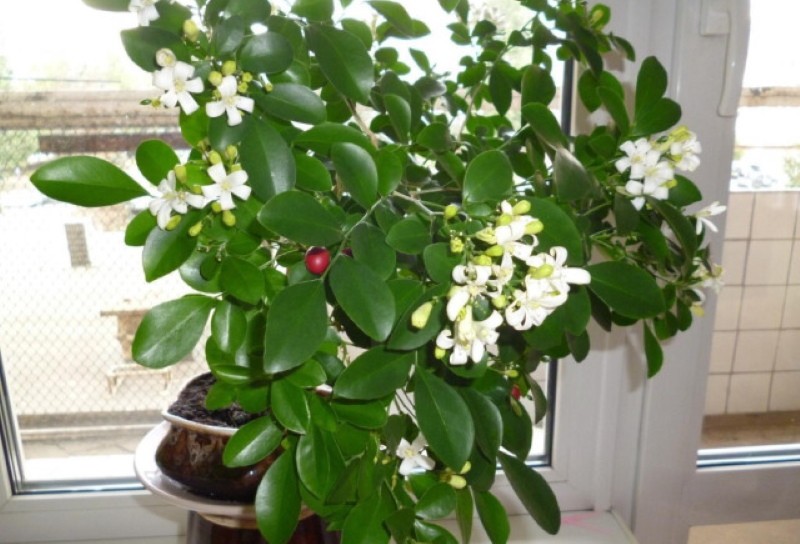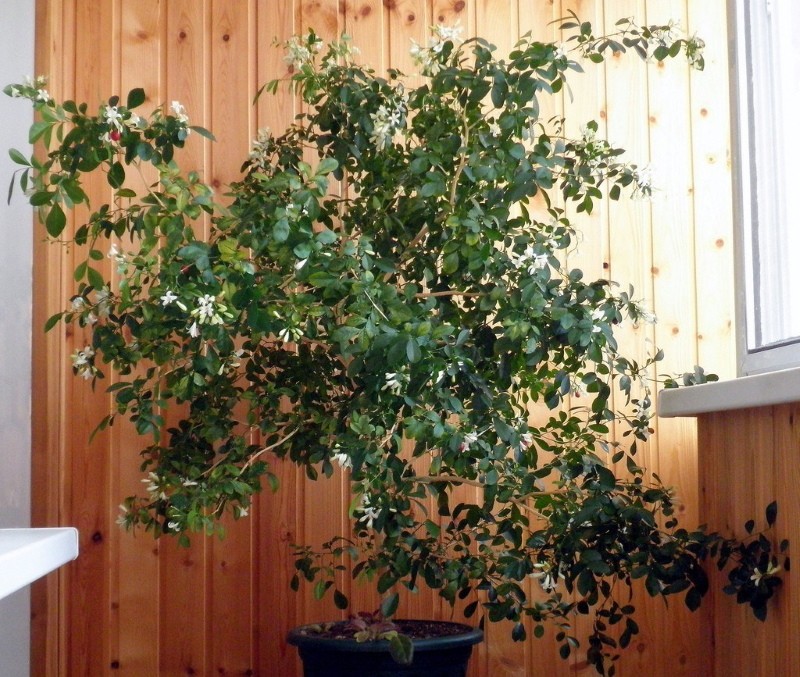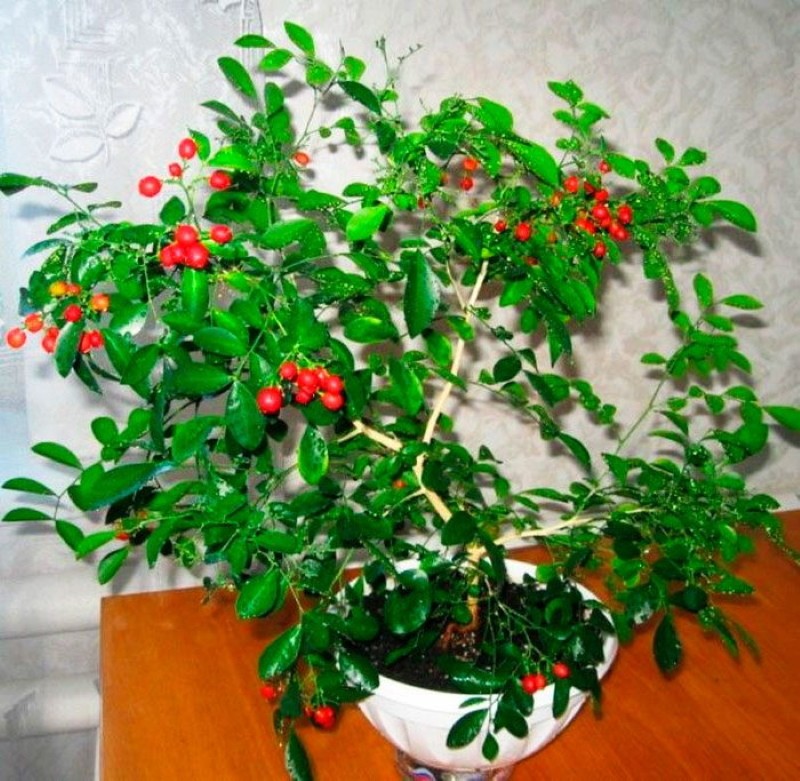The charming muraya will surprise with flowering and delight with the fruits - home care, photo
 Its fragrant flowers resemble jasmine, and its berries are hawthorn fruits, but the closest relative is citrus fruits. This is an amazing and very beautiful muraya, home care (a photo of the plant will be in the article) for which, in general, is not so difficult. Providing it with light and warmth, in return you will receive a lush bush or a luxurious little tree. It not only looks decorative, but also bears fruit with delicious berries.
Its fragrant flowers resemble jasmine, and its berries are hawthorn fruits, but the closest relative is citrus fruits. This is an amazing and very beautiful muraya, home care (a photo of the plant will be in the article) for which, in general, is not so difficult. Providing it with light and warmth, in return you will receive a lush bush or a luxurious little tree. It not only looks decorative, but also bears fruit with delicious berries.
Plant characteristic

For home cultivation, mainly compact murayi varieties are used. The height of dwarf species does not exceed 30 cm, and the largest varieties allow you to grow an almost real tree up to 1.5 m in height. Numerous branching shoots of muraya are quite thin, but flexible, covered with a beautiful yellowish bark. The leaves are dense in texture and feathery in shape. Each compound leaf has up to 7 lobes, colored dark green and covered with a glossy sheen.
A characteristic feature of muraya is double flowering. When the fruits from the first wave are already beginning to ripen on the branches, the buds of the second flowering bloom among them. The flowers are composed of long milky petals and are a bit like a jasmine bloom. They are also fragrant, but the smell is more citrusy. The fruits themselves are small berries up to 2 cm long, with a couple of long seeds. They are edible, sweet, and the color depends on the variety. There are red and black murayi. By the way, the last bones are poisonous.
All murayis bloom at home, except for varieties of Dutch selection.
Growing conditions for room murayi
 Given its tropical origin, it's not hard to guess what the plant loves. Provide good lighting by placing it on the south window. Moreover, the flower is not afraid of direct rays if it is accustomed to them from the very beginning. Daylight hours should be at least 12 hours. In the fall and winter, organize additional lighting for the bush. Muraya may well and constantly grow under artificial lighting.
Given its tropical origin, it's not hard to guess what the plant loves. Provide good lighting by placing it on the south window. Moreover, the flower is not afraid of direct rays if it is accustomed to them from the very beginning. Daylight hours should be at least 12 hours. In the fall and winter, organize additional lighting for the bush. Muraya may well and constantly grow under artificial lighting.
You can safely put the pot in the warmest room, but in the heat, try to increase the humidity. Despite the fact that the muraya adapts well to the dry air of the apartment, in hot weather it will gratefully use the additional moisture.
Muraya does not have a rest period as such; it may well be warm all year round. But for flowering, it will still be better to provide a cool winter. Take the pot to a room where the heat is not higher than 17 ° C, but not lower than 12 ° C.
Muraya - home care, photo
 The path grows well in a fertile loose substrate with neutral acidity, but does not like too oily soil. Add a little sand and vermiculite to the soil mixture. Muraye is also suitable for citrus soil. An oversized bush pot is not needed. In it, it will grow roots and the aerial part, but will not bloom.
The path grows well in a fertile loose substrate with neutral acidity, but does not like too oily soil. Add a little sand and vermiculite to the soil mixture. Muraye is also suitable for citrus soil. An oversized bush pot is not needed. In it, it will grow roots and the aerial part, but will not bloom.
Room muraya care is simple:
- Water regularly, more often in summer.
- Spray periodically.
- From spring to autumn, once a month, feed with mineral fertilizers for citrus fruits or for flowering plants.
- As it "grows" from the old pot, transplant the bush into a larger container.
Do not forget about the formative pruning - the muraya tolerates the haircut well and actively branches after it. With pruning, you can shape the plant into a tree or bush shape, and also make a beautiful bonsai.